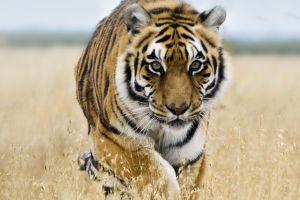The Southern Pygmy Owl (Austral Pygmy Owl, scientific name: Glaucidium nana) is a small raptor widely distributed in the southern regions of South America, including Argentina, Chile, and the Falkland Islands.
Due to its small size and unique ecological habits, this owl attracts considerable interest from scientific researchers and bird watchers alike.
Body Shape and Appearance
The Southern Pygmy Owl is notably small, with adults typically measuring only 15 to 20 centimeters in length and having a wingspan of about 30 to 35 centimeters.
Their weight generally ranges from 60 to 100 grams. The owl's feathers are predominantly brown and white spotted, with a dark brown back and a white belly featuring brown stripes.
This coloration provides excellent camouflage within their forest environment, making them less visible to both predators and prey.
Habitat
The Southern Pygmy Owl primarily inhabits temperate and subboreal forests, favoring areas with dense trees and abundant vegetation. This owl has adapted to various types of forest environments, including broadleaf, coniferous, and mixed forests.
Additionally, they find suitable habitats at lower elevations in montane forests and along the edges of farmland. The breadth of their habitat range allows them to survive and reproduce in a variety of environments.
Habits and Diet
The Southern Pygmy Owl is a nocturnal animal, typically active at dusk and during the night. They have exceptionally keen vision and hearing, which enable them to pinpoint prey even in low-light conditions.
Their primary food sources include small mammals such as rodents, small birds, insects, and other small invertebrates. The Southern Pygmy Owl hunts by ambush, remaining still and silent until prey comes within reach, then striking swiftly to capture it.
Reproduction and Life Cycle
The breeding season for the Southern Pygmy Owl usually occurs in spring. Female owls lay their eggs in tree holes or other naturally formed cavities. Clutch sizes generally range from three to five eggs, and the incubation period lasts about 28 to 30 days.
The female is primarily responsible for incubating the eggs and caring for the early brood, while the male provides food for the family. Within a month of hatching, the chicks become fully fledged and start to fly and hunt independently.
Conservation Status
Currently, the Southern Pygmy Owl is not listed as an endangered species, and its population remains relatively stable. This stability is largely due to their adaptability to a variety of environments and diets.
However, as human activities continue to destroy forests and reduce habitats, this owl faces potential threats. The key to protecting the Southern Pygmy Owl is maintaining and restoring its habitat, as well as reducing deforestation and environmental pollution.
Conclusion
The Southern Pygmy Owl is a remarkable and research-worthy small raptor. They play a vital role in South America's forest ecosystems, regulating small animal populations through predation and contributing to biodiversity.
Protecting the Southern Pygmy Owl and its habitat is essential for maintaining ecological balance and understanding the complexity and beauty of the natural world.
Future conservation efforts will require greater international collaboration and the involvement of local communities, working together to ensure the continued survival of this fascinating bird.


